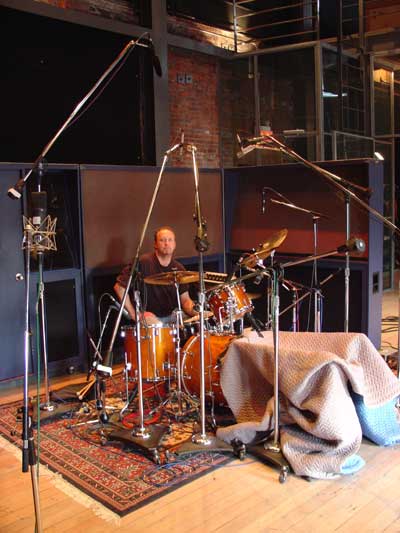Studio Drummer – Somehow We Got An Album Out Of This Mess
This track was recorded in this arcane nightmarish fashion, check it out:
This producer (who shall remain nameless) insisted that we trigger drum sounds off of real drums. Back then the triggering had a lot of latency and was inconsistent and problematic to say the least. That was the first massive distraction when trying to play…but it gets way better!
He wanted no toms on the initial bed. Toms were to be fully produced and overdubbed later. So he wanted groove, kick, snare, hat and cymbals. So I had to play and imagine (or should I say over-think) where I would play a tom fill and what that would be. Zero spontaneity! He also said that I couldn’t use stand-in toms such as Simmons toms that were not producing any sound, just stand-ins so it would feel a bit more natural. The added problem?
We were recording bass and drums as a bed track, together, on the whole album.
Real time scenario;
I would come to the end of a phrase and try not to over-think the fact that I had no toms and I would leave a gap in the bed performance knowing that we’d be doing a tom overdub in that spot.
So get this,… I would be playing and hoping that the triggers were working properly going to the Linn drum (young folks do your homework lol) and when I’d come to the end of an 8 bar section for example I’d stop for 2-3 beats to accommodate the ‘phantom tom overdub’ yet to be, but one problem…
The bass player is playing with me live, doing a big budget session and of course there’s pressure there. He hears me stop, ..completely stop at the end of the 8 bar section and thinks that I’ve made a mistake so he’s thrown so he stops. After a while he understands that I’m stopping because I’m leaving space for a tom overdub but that still is a massive distraction to him as the session goes on, trying to lay down a solid good feeling track!
I swear to God that I can’t believe that we got anything that was usable and this was way before digital editing. It still had to groove. This was going down to 2 inch tape. So it had to be believable. But you couldn’t punch in on 2 inch tape unless you had a large break in the music, so it was on! It’s a truly different world now a days. Those kind of extreme pressure days are mostly over but they were great experience and trial by fire.
We had to work through the pressure and the ridiculous impediments put on us by this producer,.. but still try to groove and do something that had attitude and merit.
How is that for an old school recording nightmare?
All 100% true. Just another crazy experience in the studio… Ocean Sound, Vancouver






